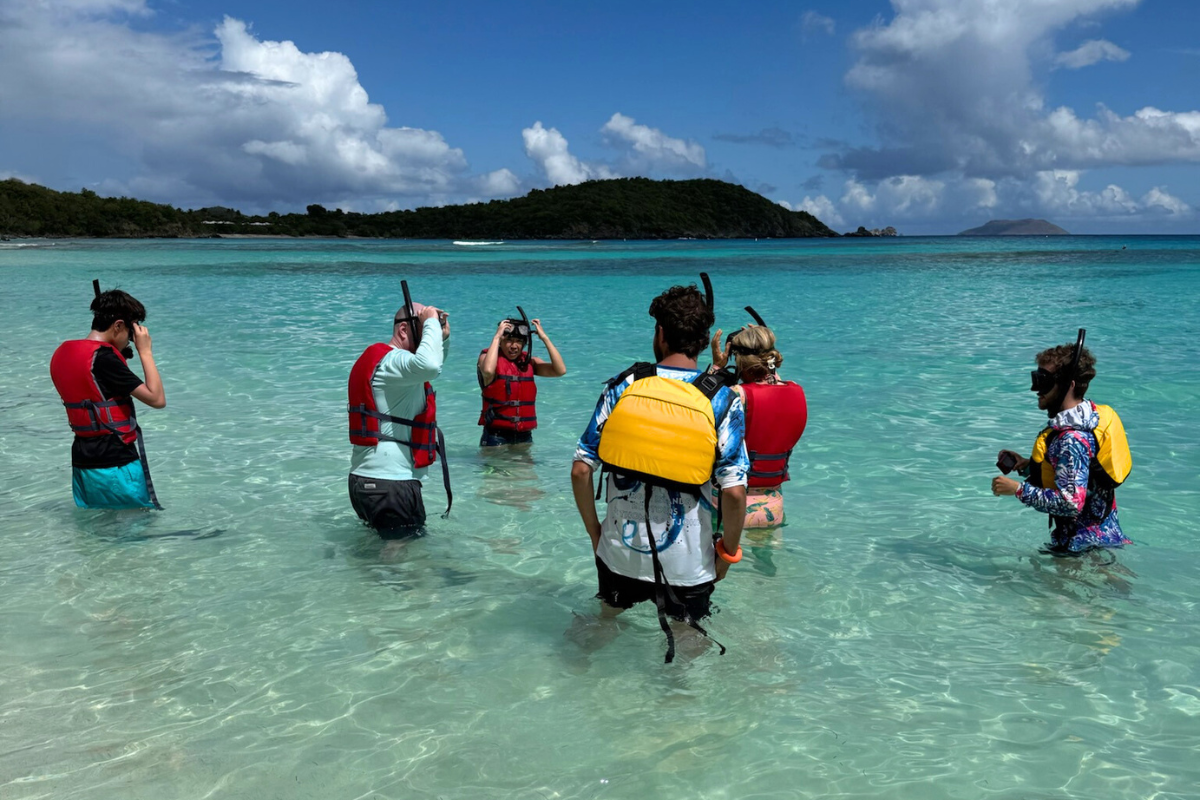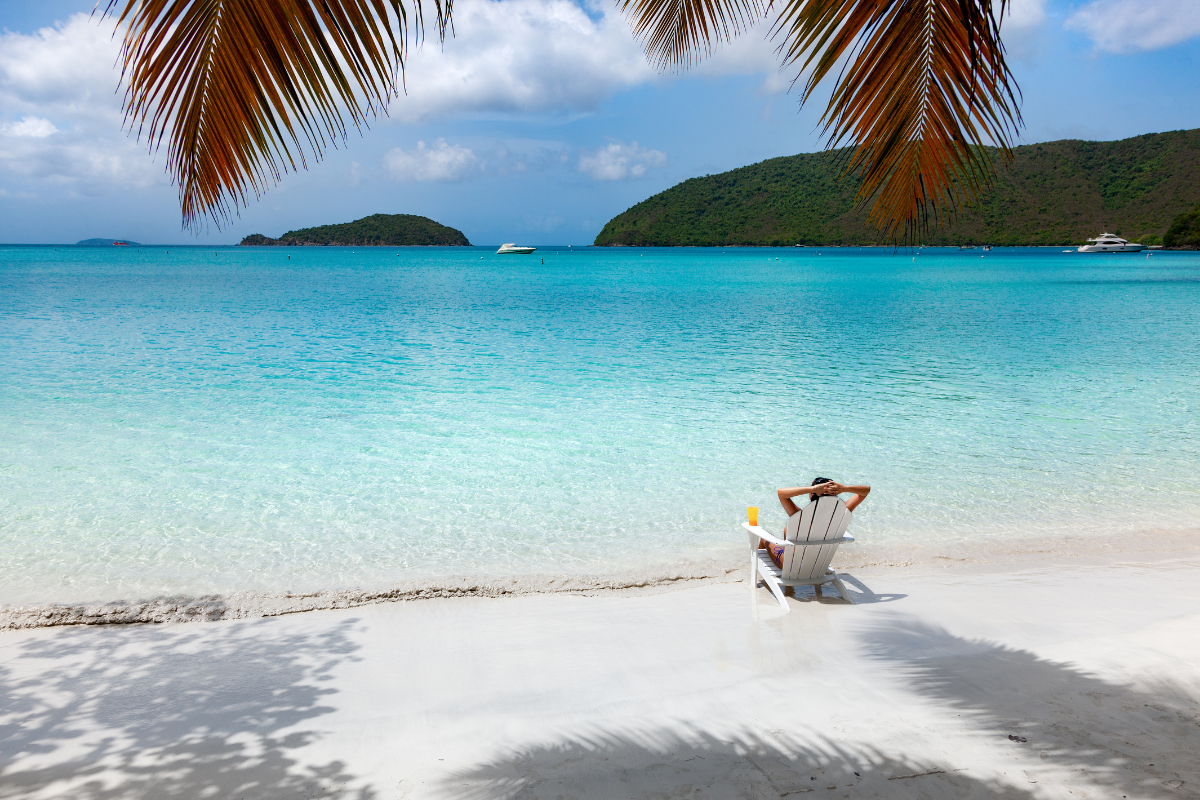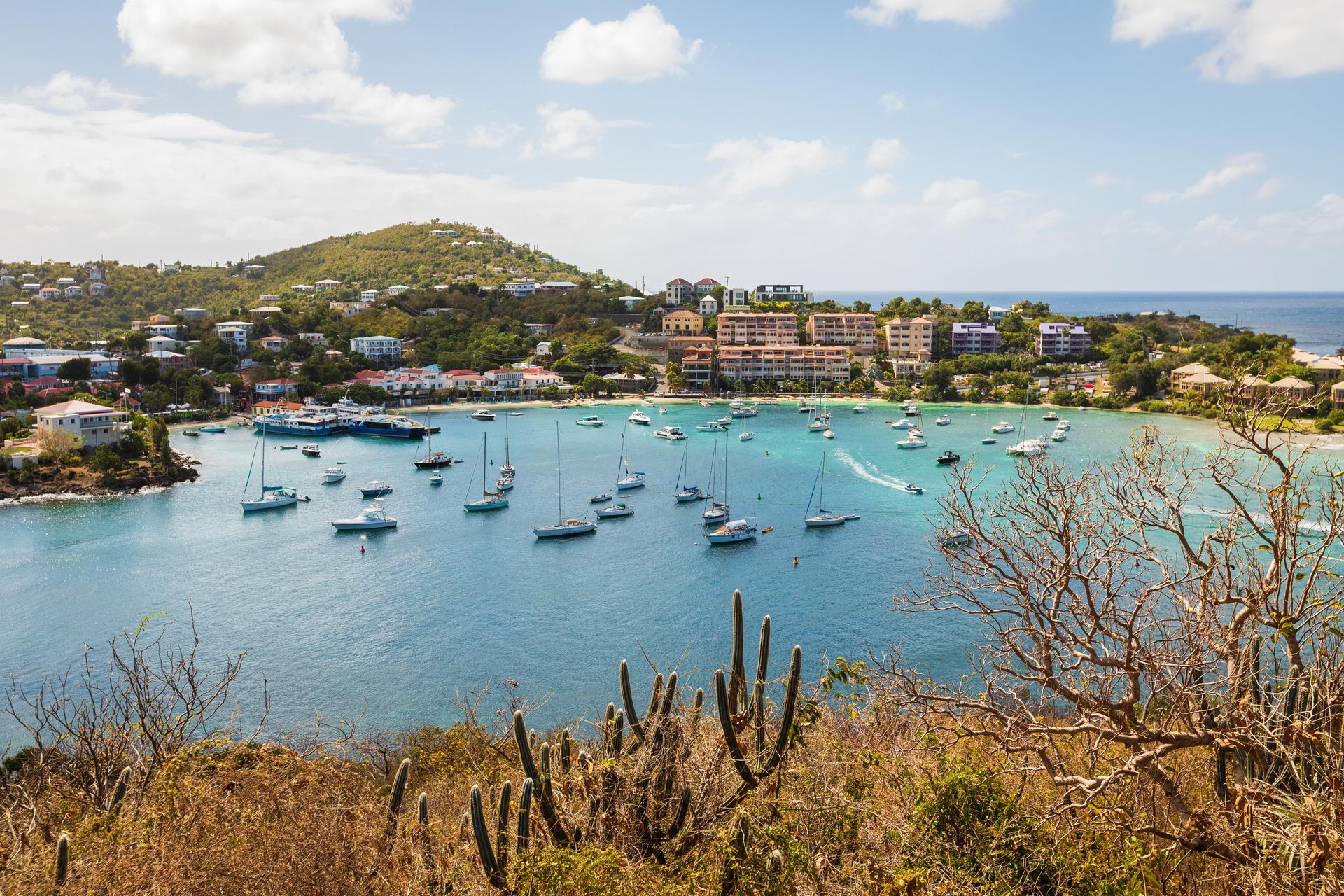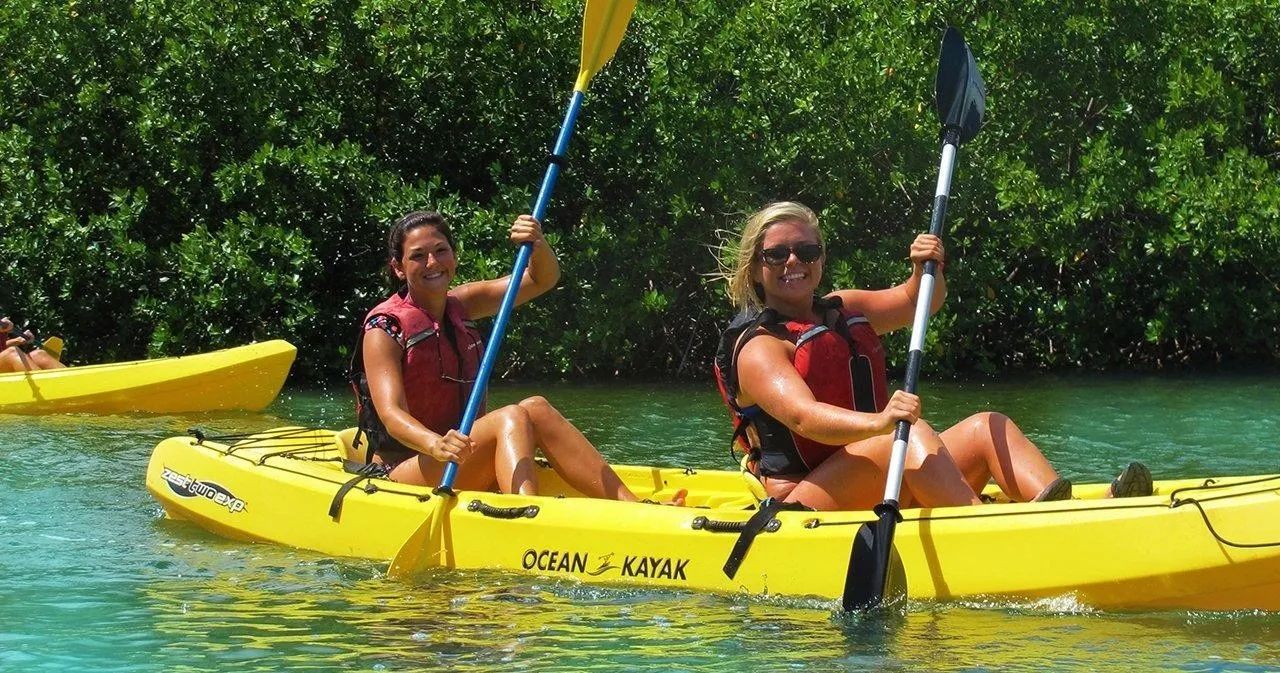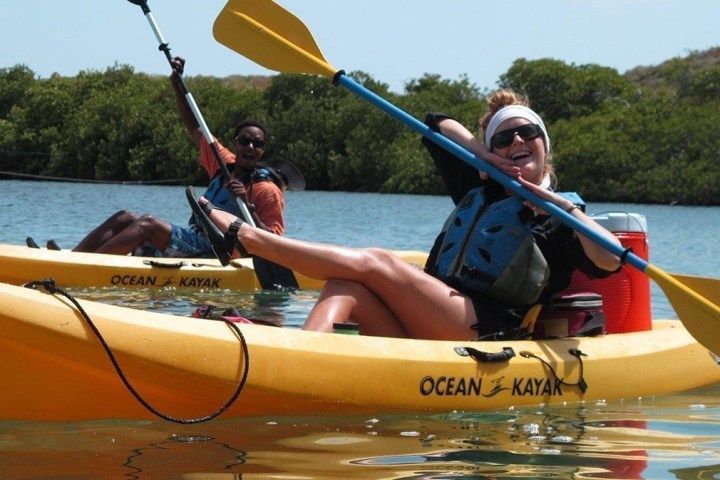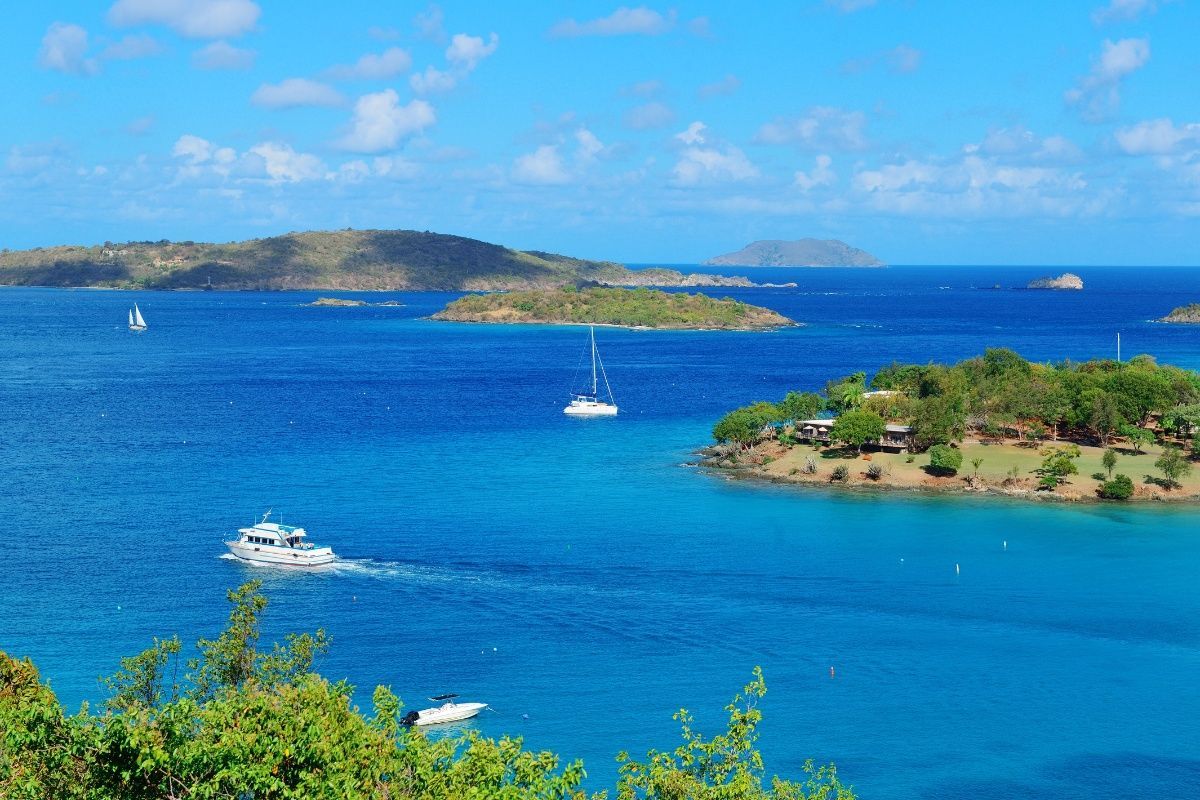10 Under the Sea Characters That You’ll Meet in the Virgin Islands
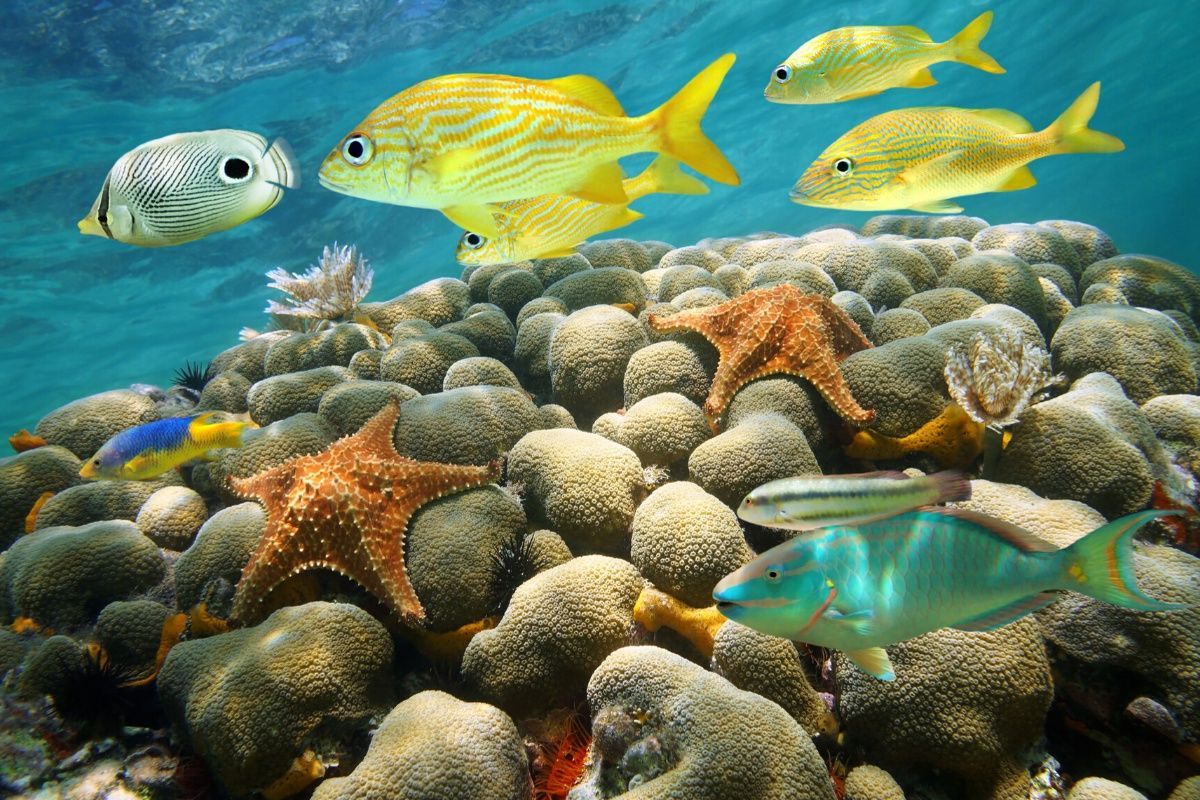
The Caribbean sea surrounding the Virgin Islands is teeming with life. So many sea creatures to meet, so little time. To help familiarize you with those you’ll likely encounter while snorkeling with us, we made you a handy guide to introduce you. Come, be a part of our world…
1) Stoplight Parrotfish: These flashy fish are the clowns of the Caribbean, decked out in a rainbow of colorful scales. Their signature goofy feature – their buck teeth – actually serve an important purpose. Parrotfish are the worker-bees of the sea, chomping on algae and coral, which they later excrete (yup – poop!) as sand, helping to maintain the supply of our islands’ sandy beaches. The next time you’re digging your toes into the white sand of Honeymoon Beach, thank the parrotfish.
2) Green Sea Turtle: No one does island time better than the sea turtles. You could spend an entire afternoon lazily swimming alongside these gentle creatures while they alternate between grazing on sea grass and algae, and slowly rising to the surface for intermittent air. They appreciate their space, but if you don’t crowd them or chase them, they’ll usually allow you to hang around and watch them for long periods of time.
3) Barracuda:
Oh, the attitude! Oh, the underbite! The barracuda’s visible sharp teeth usually frighten those swimming in their range, though not to fear – they’re usually far more intimidated by you than you could possibly be of them. To them, you look like a very large predator. If they hang around near you as you’re snorkeling, it’s likely because they’re hoping to get some of your leftovers, not because they have any intention of biting you. If you’re lucky, you’ll get to witness their speedy swimming, if they happen to burst off in pursuit of smaller prey.
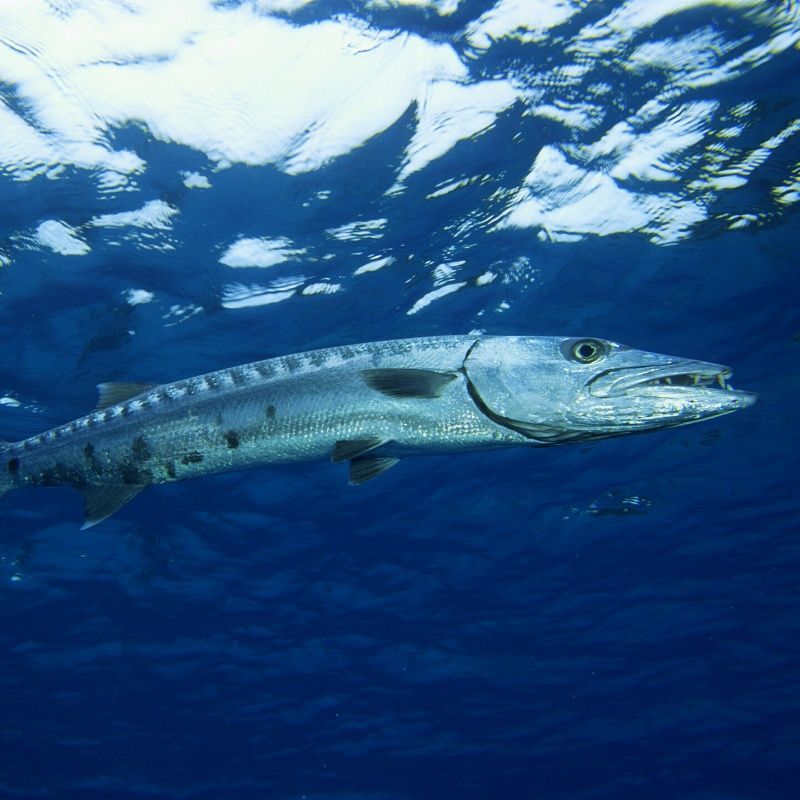
4) Sergeant Majors: Swimming with schools of these cuties will make you think you’ve found a swarm of underwater honeybees. Their mostly yellow, black-striped bodies are a sight to see, especially since they’re almost always clustered in large schools. Unafraid of snorkelers, they’ll hang around and enchant you with their attention. You can tell which ones are the males by their slightly faded stripes and purplish accents.
5) Spiny Lobster: Do you know what makes these Caribbean crustaceans different than their northern counterparts? Hint: something pretty big is missing… It’s the claws! These warm water lobster love to hide under rocks and coral, though you can usually spot their super long, spiny antennae popping out of holes. If out in the open, you may even get to see their snazzy swimming technique – they swim backwards, pumping their tails, when trying to evade predators.
6) Spotted Trunkfish: These fish are also known locally as “box fish” due to their blocky body shape. Trunkfish often inspire underwater awww’s due to their adorable appearance – big, earnest eyes, puckered lips, and stunning spotted scales. They can be a bit on the shy side, so if you happen to see one, approach slowly so as not to startle them away.
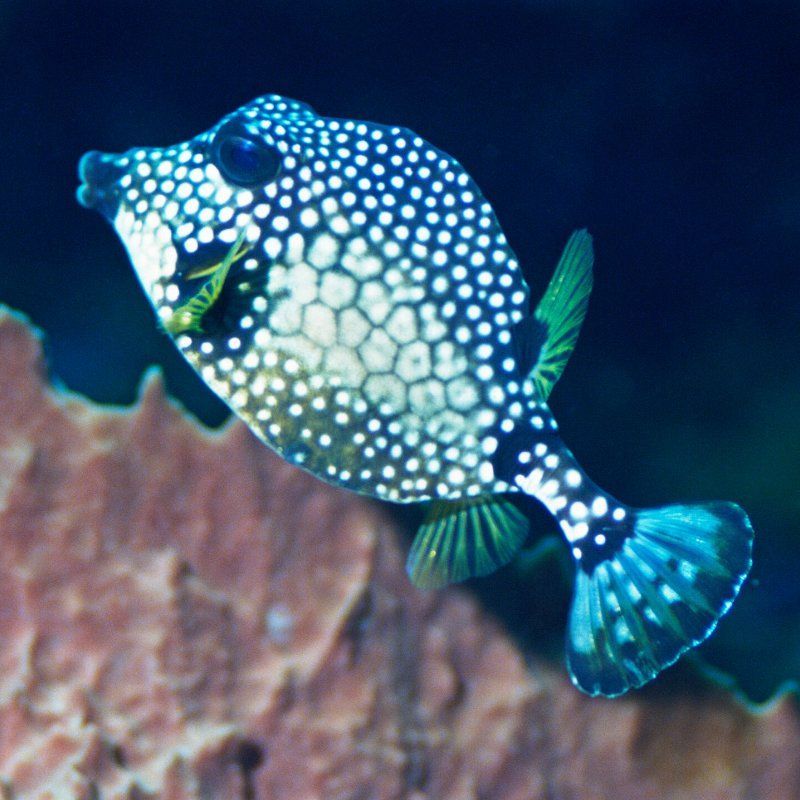
7) Queen Conch: You’ve likely seen their empty shells everywhere, but have you ever seen an actual, live conch? Conch are a species of sea snail that inhabit the gorgeous pink shells that are so abundant in the tropics. If you spot a shell while underwater, take a closer look and see if you can catch one eye or two on the end of long stalks peeking out – that’s the conch! The same goes if you see a large shell moving around on the sea floor; conch have a powerful foot that they use to propel themselves around, looking for algae and other plant matter to feed on.
8) White-spotted Eagle Ray: These beauties never fail to take your breath away (though hopefully not really – keep that snorkel in your mouth!). The stunning white spots against the deep blue of their body seem to glow underwater. You’ll usually spot them gracefully swimming solo, though you may occasionally see them in small groups. And if you’re lucky, you may even see them executing one of their out of the water leaps. These rays are definitely the dancers of the sea.
9) Moray Eel: Much like the barracuda, this sea creature’s appearance is far more frightening than their actual personality. To many, moray eels appear to be aggressively “biting” at the water around them, when really all they’re doing is breathing. Morays breathe by constantly opening and closing their mouths. You’ll often see them lazily sticking their heads out of crevices, just hanging out and breathing, waiting for prey to swim by. They won’t bother you if you don’t bother them. Keep in mind that their vision isn’t so great, so just enjoy watching them at a slight distance.
10) Sea Egg: This species of sea urchin is far less of a poking danger compared to its sibling, the black sea urchin. Unlike the black version, the white sea egg’s spines aren’t quite so long and brittle. They love to feed on algae, and you can often find them clustered on rocks and coral heads. They particularly enjoy some refreshing water flow, and tend to gather where the tides are churning. They may not look alive at first glance, but hover nearby and watch their spines sway with the water. If you see them with pieces of sea grass that appear to be stuck to them, that’s them trying to give themselves some sun protection – their version of sunblock!
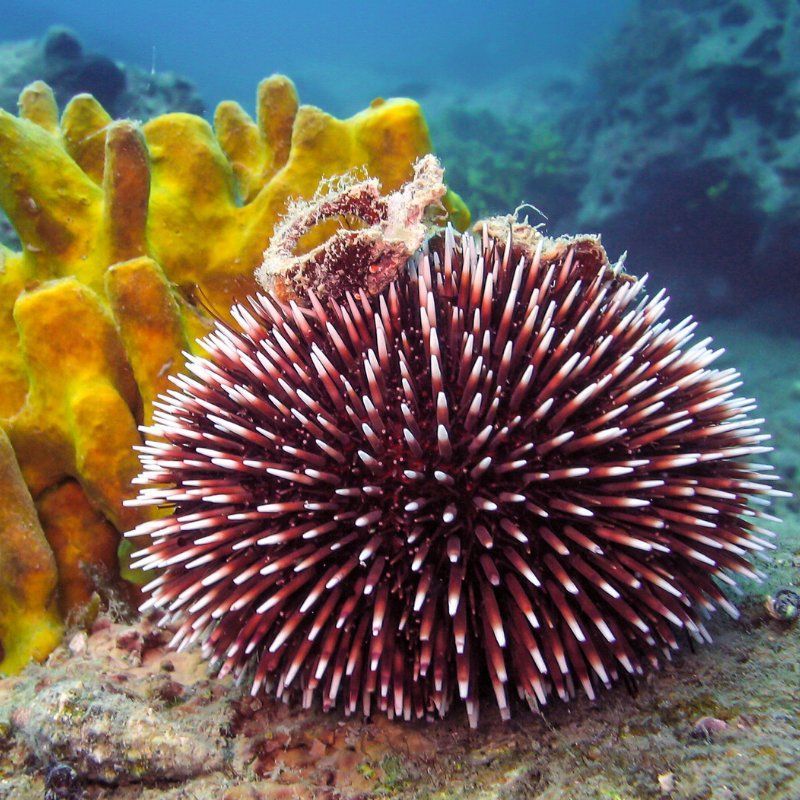
Have you met any of these characters yet? Who do you hope to “swim into” next time you’re snorkeling with us in the Virgin Islands?
Looking for an expert guide to help you find the marine life you’re looking for? Check out our guided snorkel tours – available on both St. Thomas and St. John!
Please join our monthly newsletter!
You May Also Like
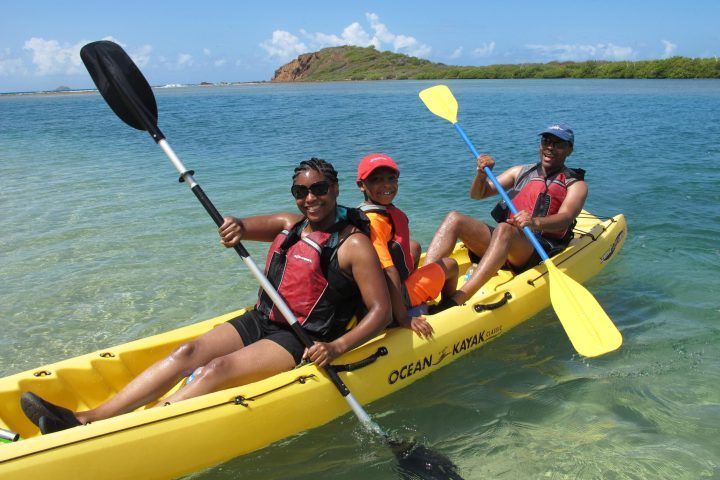
Cas Cay Kayak, Hike & Snorkeling Ecotour
St. Thomas
3 Hours
Embark on an exclusive morning adventure through the serene beauty of Cas Cay, where tranquil mangroves, vibrant marine life, and breathtaking volcanic vistas await—discover this hidden gem with knowledgeable guides.

St. John
3 Hours
Hike & Beach Adventure Tour: Discover Honeymoon Beach on St. John
Looking to pack a BIG experience into a short amount of time? Then we’ve got just the adventure for you! This tour is designed for groups of 4 or more.
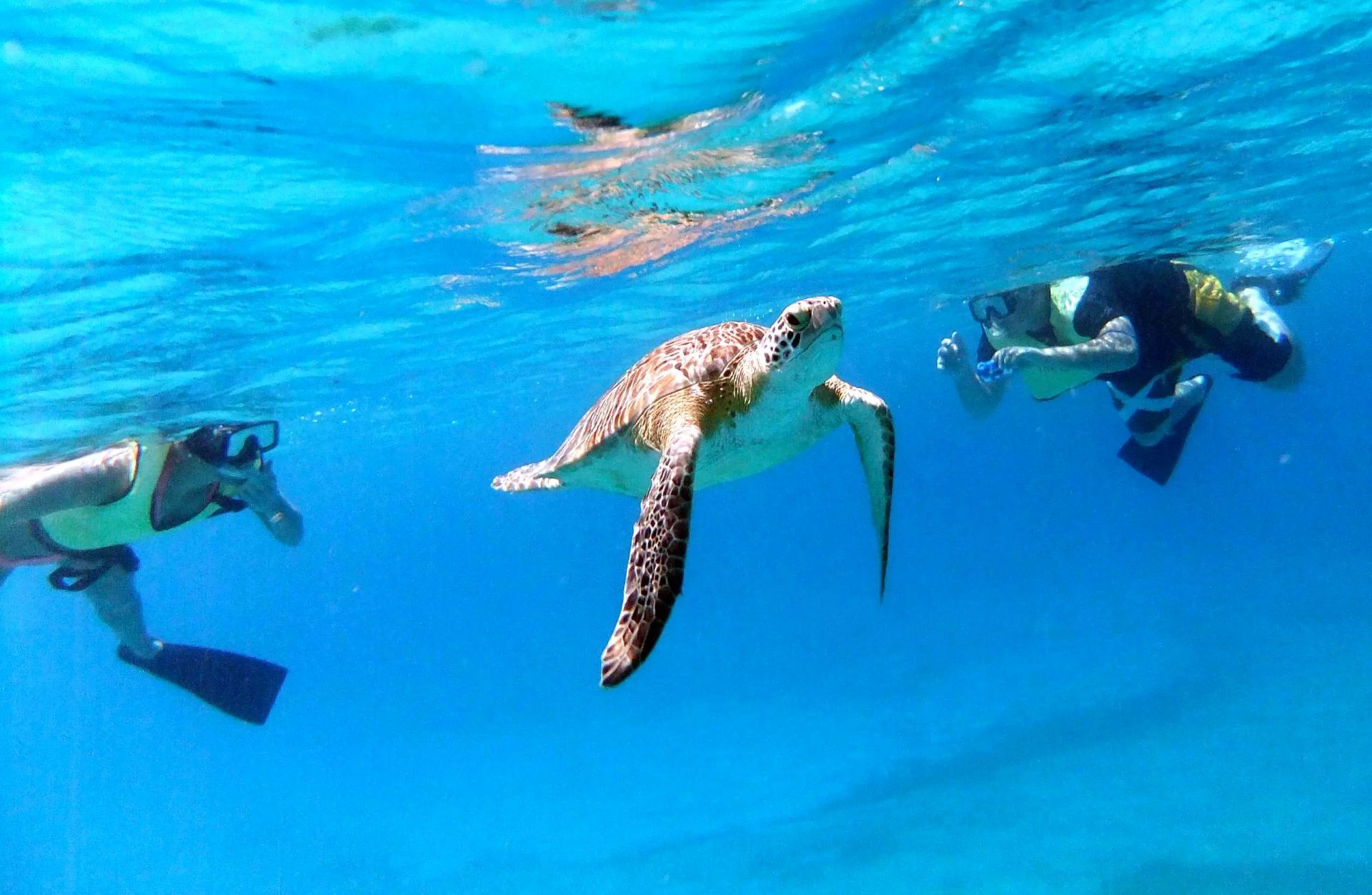
Swim alongside graceful Hawksbill and Green Sea Turtles in the crystal-clear waters of St. Croix on this unforgettable guided snorkel tour. Explore vibrant coral reefs and encounter diverse marine life with expert guides ensuring a safe and memorable experience. Perfect for all skill levels, this unique adventure offers an up-close look at St. Croix’s stunning underwater world—an experience you’ll never forget.
St. Croix
1.5 Hours

